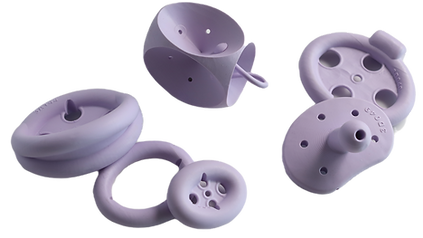
ORIGINS
Our story. Our vision. Watch it here.
1 in 2
Yet the current standard of pessary care falls short.
Struggling to find the right fit?
You're not alone.
We understand how frustrating it is to not be able to find a solution.
At Cosm, we believe that every woman is unique, so her care should be too. Experience the first personalized solutions for prolapse and incontinence.
We’re...
Health Canada-approved
FDA-cleared
NOTE: Select models may not be available in your country. Contact us for details regarding product availability.
The Cosm Difference

Trailblazing precision care in pelvic health, we leverage AI and 3D printing to personalize our pessaries for each patient’s unique needs.
Curious about what makes Cosm, Cosm?
Read more about us below.
References
-
Nygaard, I., Barber, M. D., Burgio, K. L., Kenton, K., Meikle, S., Schaffer, J., ... & Pelvic Floor Disorders Network. (2008). Prevalence of symptomatic pelvic floor disorders in US women. Jama, 300(11), 1311-1316.
-
Clemons, J. L., Aguilar, V. C., Tillinghast, T. A., Jackson, N. D. & Myers, D. L. Risk factors associated with an unsuccessful pessary fitting trial in women with pelvic organ prolapse. American Journal of Obstetrics and Gynecology 190, 345–350 (2004).
-
Lamers, B. H., Broekman, B. M. & Milani, A. L. Pessary treatment for pelvic organ prolapse and health-related quality of life: A Review. International Urogynecology Journal 22, 637–644 (2011).
-
Sarma, S., Ying, T. & Moore, K. H. Long-term vaginal ring pessary use: Discontinuation rates and adverse events. BJOG: An International Journal of Obstetrics & Gynaecology 116, 1715–1721 (2009).
_edit.png)

.png)